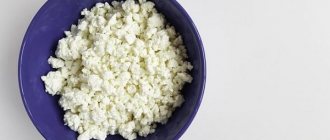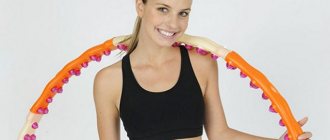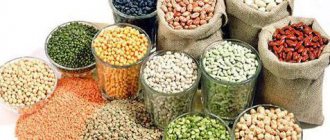Why is fitness necessary for a teenager?
It is believed that fitness helps in two cases: losing excess weight and strengthening the muscle corset. But for children, harmonious physical development, which is ensured by regular sports, is more important. At the age of 10-15 years, children experience a stage of rapid development, as a result of which all body systems undergo dramatic changes. Especially the skeleton of a child. During this period, bones grow faster than muscles, so the teenager looks angular and awkward.
The cardiovascular system also changes. Due to a sedentary lifestyle, most children develop physical inactivity, increasing the risk of spinal curvature and other health problems. The psychological factor is also important. Teenagers are rarely satisfied with their appearance, which is why complexes and embarrassment appear. Fitness will help correct the situation. And in the future, regular exercise will create a beautiful figure and protect you from excess weight.
Sports suitable for teenagers
It is certainly too late to start practicing such complex coordination sports as artistic gymnastics and acrobatics, rhythmic gymnastics and figure skating. Training there is aimed exclusively at Olympic results; it begins at the age of 3-5, and by adolescence those who have not received the Master of Sports rank are already eliminated.
Children 10-12 years old still have time to get into the prestigious sections of alpine skiing or tennis. However, it is important to calculate the family’s financial strength for the future. Alpine skiing will require large investments in equipment and trips to training camps. The costs for tennis balls and constant re-stringing of the racket will also be considerable.
The issue with men's football remains open. Here, the possibility of getting into the sports section depends on the city in which you live. But if we are talking about women's football, if there are sections, then there will be no problems.
To start practicing all other sports, adolescence is ideal. There is a small caveat, though. People start trying to lift weights, lift a barbell, or do track and field throwing “like an adult” later—after 16 years.
If you are pursuing the goal of giving your child universal physical training, we recommend that between the ages of 10 and 17, play different sports. Here are their types and the optimal sequence:
- 10 - swimming;
- 11 - speed skating, cycling;
- 12 - athletics, cross-country skiing;
- 13 - fencing, wrestling, boxing or martial arts;
- 14 - team sport;
- 15 - bullet shooting;
- 16 - equestrian sport.
Fitness for teenagers is a dream that can be realized. Help us find a club that has teenage equipment and a certified specialist who knows training methods adapted for this age category.
And in conclusion, we will give advice to parents of obese children who are embarrassed to exercise “in public.” Help your child gradually lose extra pounds. Get advice from a children's nutritionist and exercise therapy methodologist. Buy a home exercise bike, treadmill or stepper. The result will not take long to arrive. If you follow the recommendations, within six months, your child will feel confident and will be able to attend the sports section.
At what age can you do fitness?
If previously playing sports was the privilege of adults, now children’s and teenagers’ fitness is a fashionable trend. In the gym, children can do yoga, Pilates, strength training in a group or with a trainer. Moreover, individual lessons are recommended up to 14 years of age, because from this age a teenager can attend classes on an equal basis with adults.
From the age of 16, a child can begin independent training. However, it is worth remembering that at this age the skeletal system is strengthening, so intense strength training can lead to delayed development or injury. Due attention from parents will help avoid this. In return, your child will receive a lot of benefits from regular exercise:
- Increased flexibility and endurance.
- Improved coordination.
- Strengthening tendons and ligaments.
- Prevention of cardiovascular diseases and ARVI.
- Increased self-esteem.
- Positive attitude and development of healthy lifestyle habits.
The main thing is that fitness brings pleasure, and exercises are not a burden. Therefore, it is important to choose the right type of physical activity, focusing on the child’s preferences, his state of health and body type.
Digital photography
Ruslan Orlov's photography school offers a practical course for children aged 11-16 years. Training starts from scratch. Working with a digital camera is discussed in detail, the basics of constructing a photo composition in a frame and the features of photography in various genres of photography are given: landscape, portrait, macro, genre photography, photography of sports competitions. Some classes take place in the fresh air, for example, on Izmailovsky Island.
When: from June 29, 3 weeks, 3 times a week. Applications are accepted until May 25.
Where: Arbatskaya and Semenovskaya metro stations.
Cost: 12,000 rubles.
Telephone:
What type of fitness to choose and why
When choosing the type of training for a teenager, you should focus on the purpose of the lesson. If sport becomes a career in the future, then you should listen more carefully to the advice of your doctor and coach. In this case, it is necessary to take into account the child’s physique, health status and temperament type. However, if fitness is a way for you to increase your teenager’s activity, instill healthy habits and improve immunity, then the choice is up to the teenager. And there is plenty to choose from:
- Swimming strengthens the back muscles, develops the respiratory and cardiovascular systems.
- Dancing, thanks to the gentle load on the body, develops endurance and flexibility, and contributes to the formation of correct posture.
- Football, basketball or volleyball are suitable for boys. They provide good physical fitness and mood;
- A skateboard, roller skates or skates are useful and modern, especially if you master complex tricks.
- Although strength training is less beneficial for a teenager, with adequate load it helps strengthen muscles and ligaments. You can start with a barbell, dumbbells or small weights.
- Pilates, calanetics and yoga are classes for advanced teenagers who want to develop flexibility and learn to listen to their body and live in harmony with themselves. Basic asanas are easy to learn from videos.
- Cardio training is the most accessible form of fitness. Running, race walking, cycling or exercise on an orbit track do not require the supervision of a trainer. You can't make a mistake when doing them.
As you begin the habit, try to explain to your teen that it is necessary to stay fit and healthy. It also makes sense to give an example of what sport your child’s idol plays in order to motivate him to practice.
What sports should a teenager do?
Before you understand what sport a teenager should take up, you need to decide what goal you are pursuing.
If you want your teenager to make a professional career as an athlete, then you should be as careful as possible when choosing a sport. In this case, you need to take into account the child’s health status, the characteristics of his physique, his interest, and also consult with coaches.
If the main goal of parents is to form a healthy lifestyle for a teenager, prevent bad habits, improve health, develop dexterity, strength and endurance, then the main thing is the teenager’s personal interest. Even if a short guy wants to play basketball, let him play. What is important here is not success, but activity and movement.
Having decided on the purpose of sports activities, let’s try to figure out what you need to pay attention to when choosing a sport for a teenager:
- on physiological characteristics
- health status
- psychological characteristics
- individual preferences.
Body type. A teenager has the right to choose the sport that he likes. However, if you take into account his physique, it will be easier for him to achieve high results. For example, if your child is tall, he will achieve success in basketball. Rhythmic gymnastics is suitable for thin girls. Weightlifting will be easy for large teenagers. Children with long legs will achieve success in athletics.
Temperament. A calm teenager would be better suited to chess, yoga or some kind of gymnastics. It is difficult for such children to play team sports. But such sports are perfect for an active and enterprising teenager: he will excel in an exciting and driving game. Psychologists advise teenagers who have problems adapting to a group of peers, as well as those who are undisciplined and irresponsible, to also take up team sports: by playing, children will acquire useful communication skills. Wrestling and martial arts classes are suitable for fighting boys and girls: they will have somewhere to put their irrepressible energy.
Floor. Gender differences also play a role in the choice of sports for teenagers. Obviously, strength sports are more suitable for young men, as are hockey and football. For girls, guided by the desire to become slim and beautiful, it is better to choose some type of aerobics or fitness, swimming or water aerobics.
“Did you know that the main thing in choosing a sport is that it brings benefits to the growing body and pleasure?”
What you need to know before starting classes
Any type of fitness immerses a teenager in “adult” emotions, taking up part of his free time. Therefore, you should prepare for such a step. Eg:
- When enrolling a teenager in a fitness club, do not force your opinion on him. Instead, it is better to recommend a section to him, and the choice should be his.
- Consult a physician if your child has a chronic illness.
- Buy beautiful and comfortable sportswear and sneakers. Moreover, for girls, this approach will be an additional incentive not to miss classes.
- If a teenager needs to lose weight, then exercise should be accompanied by dietary control from parents.
- Buy a family membership and go to the gym together. Your personal example will become an additional incentive and pride for the child.
If a teenager decides to quit classes, consult with a coach to clarify the situation. Maybe it’s just fatigue that you need to endure by taking a break for a week, or it’s “burnout”, and the time has come to change the type of activity.
What exercises can you do?
It is recommended that teenagers perform strength exercises only with their own weight, as additional load can slow down bone growth. The simplest exercises include:
- Knee push-ups are an easier version of classic push-ups. In this version, the load falls on the knees, and the shins need to be raised and the toes extended. This exercise strengthens the pectoral muscles and arms. Fast execution forms the relief, slow execution creates a toned appearance.
- “Plank” is a static exercise, during which it is important to hold the body correctly. To assume the position, lie on the floor with your stomach down, bend your elbows at right angles and go into a lying position. The “plank” uses more than just your abdominal muscles, so after 30 seconds in this position you will feel trembling throughout your body.
- Lunges are an effective exercise for working the thighs and buttocks. Place your legs parallel to each other, straighten your back and tuck your stomach. Maintaining this position, take a long step forward, bending your knee and placing your weight on your extended leg. Return to the starting position.
Examples of training plans by day
Systematic exercises at home can be no less effective than training in the gym. Let's look at an example program that uses all major muscle groups. Let's start with a warm-up:
- First of all, five to seven minutes of light jogging or walking.
- Now we stop, feet still shoulder-width apart, arms along the body. Slowly turn your head completely to the left, then to the right. Repeat 6 times in each direction.
- Place your fingers on your shoulders and spread your elbows to the sides. Make rotational movements outward and inward 10-15 times.
Having completed the warm-up, we proceed to the main exercises:
- Let's start with squats. You need to squat down 10-15 times until parallel to the floor, this will help avoid additional stress on the joints. In this case, the back should remain straight, feet shoulder-width apart, and hands on the belt or in front of you.
- Next comes the traditional pull-up on the bar. 5-10 times will be enough. The correct technique for performing pull-ups can be seen in this video (https://www.youtube.com/watch?v=eMsTT1uajTY).
- 10-15 push-ups with your body as straight as possible and as low as possible. Without following the technique, exercises are meaningless.
- The next exercise is “bicycle”. Lie on your back, arms along your body. Raise your knees bent so that you form a right angle with your body. Rotate your legs 30-40 times, simulating pedaling a bicycle.
You need to complete the complex with stretching:
- Get on all fours on the mat and bend your back down and up ten times.
- Then sit on the floor and spread your legs as wide as possible without straightening them. Take turns leaning left, right and forward. Repeat 10 times.
- Lie on your back and bend your knees. Then slowly raise and lower your pelvis 10 times, holding it for ten seconds in the upper position.
At this point the exercises are over - you can catch your breath and return to your business.
Training rules for teenagers
It is best for a coach to create a training program for a teenager, taking into account the initial data and goals of the novice athlete. If this is not yet possible, make a training plan according to these rules:
Start your strength training with exercises without weights. “In the initial stages, children and adolescents should perform exercises with their own body weight in order to master the correct movement technique,” says Lyubov Pereverzeva.
Include basic exercises in your training program that involve several muscle groups - lunges, squats, bending, deadlifts. “When a teenager masters the technique of performing the exercise and can do 8-15 repetitions without errors, the weight load can be gradually increased and work with resistance can be added,” says Lyubov Pereverzeva.
Design a training program to work all major muscle groups. “Strength training in childhood and especially in adolescence should be focused on the development of physical abilities, so it is necessary to involve all important muscle groups. Movements must be performed with full amplitude in order to maintain and develop joint mobility and their functions,” comments the expert.
Increase the load slowly . “The main rule is a very smooth and slow increase in load,” warns Lyubov Pereverzeva. — Do not train using maximum load. Teenagers are in a phase of growth and development, so any overload (with their own weight and weights) can cause injury or create muscle imbalances that will lead to poor posture.”
Be careful when using exercise equipment. First, use light weights to avoid overloading. Secondly, experts do not advise getting too carried away with them in principle. “Gym machines are usually designed for adults and are very often unsuitable for training children, which must meet certain functional requirements,” says Lyubov Pereverzeva.
It is acceptable to perform 1-2 exercises on machines per session, focusing on functional and basic movements with your own weight or weights.
Correctly draw up the “scenario” of the lesson. It should include an introductory part, a main block of exercises and stretching. “A workout always begins with a warm-up, which prepares the body for the upcoming load. Warm-up exercises (joint and general strengthening) should involve the whole body, joints and muscles,” notes Lyubov Pereverzeva.
Examples of warm-ups can be found here.
Then move on to the main block of exercises. “In the main part of the lesson, it is recommended to work on large muscle groups, as an option - combining strength training with cardio (for example: squats, lunges, bending, jumping, running), then - focusing on working with small muscle groups (push-ups, arm curls, bringing the shoulder blades together),” advises Lyubov Pereverzeva.
Experts also recommend using sports equipment during classes: balls of different diameters, balancing platforms, elastic bands, rubber shock absorbers (expanders), TRX loops, dumbbells.
You need to finish your fitness lesson with low-intensity exercises. “At the end of the workout, they perform calmer exercises to reduce stress and restore breathing (for example, stretching and breathing exercises),” adds Lyubov Pereverzeva.
Common mistakes
Adolescence is a time for making mistakes and looking for your “rake”. However, some of them are easy to avoid, the main thing is to notice in time:
- Lack of proper diet.
- Ignorance of exercise technique.
- Irregularity of classes throughout the month.
- Lack of sleep.
- Insufficient break between fitness visits.
- Overload.
If a teenager decides to take classes seriously, it is worth drawing his attention in advance to possible difficulties and mistakes, explaining them in a positive way.
How to eat healthy for a teenager
The typical “diet” of a teenager is far from the healthy nutrition needed by a growing body, especially when playing sports. For the correct balance of all nutrients, the body needs:
- Fruits and vegetables rich in vitamins and microelements.
- Dairy and fermented milk products, cheeses.
- Lean meat and fish, eggs.
- Legumes and nuts.
- Whole grain cereals as a source of healthy carbohydrates.
Calcium is essential for the development and strengthening of bones and teeth. It is found in hard cheeses, milk, lentils, beans, broccoli and nuts. Meat products, fish and cottage cheese are rich in protein, which is necessary for the restoration of muscle tissue. A diet rich in protein will help a teenager get stronger and cope with the load.
Fitness not only promotes muscle growth and puts the whole body in order. Regular attendance at classes is the key to a beautiful body and a successful and long life for the younger generation. That's all. If you liked it, subscribe to articles and share useful information on social networks. There will be a lot more interesting things!










